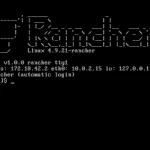Last Updated on: 10th November 2023, 04:47 pm
Web site: github.com/ArachnidNetworks/SpiderOS
Origin: China
Category: Workstation, Embedded
Desktop environment: CLI
Architecture: ARM, x86_64
Based on: Independent
Wikipedia:
Media: Install
The last version | Released: 2019
SpiderOS – a super-light OS designed for speed on modern hardware.
The codebase needs to run fast, especially since it’s all virtual. Due to this, we need to optimize our code and our system. Due to the nature of this beast, a miniature Linux distro is needed. Developers have created build tools to spin custom images, borrowing from the Slitaz iso image, to construct a super small system that is capable of outperforming any available linux distro on modern hardware.
Since the system is built to be EXTREMELY small, it can work really well in containers. Along with this, if someone wishes to squeeze all the performance out of their desktop, an OS such as this will help them perform this task. To add to this list, this distro has it’s own open source build tools, making embedded Linux an option for SpiderOS.
SpiderOS doesn’t use a package manager, but instead provides a BSD-like ports system to assist in installing software. SpiderOS ports are different in the fact that a SH script is provided to assist in the installation of these apps. It also provides the developer leeway to allow or disallow the ability to use dependency resolution as SpiderOS provides power to the developer.
The SpiderOS contain build scripts to install GCC and GNU make into your stage3 system directory.
The way to guarantee high performance and functionality on SpiderOS is to build your own custom Linux kernel. It provides a build script to allow you to do this on native hardware. However, you may need to manually build your own kernel to allow for Cross-Compiling on different hardware.




